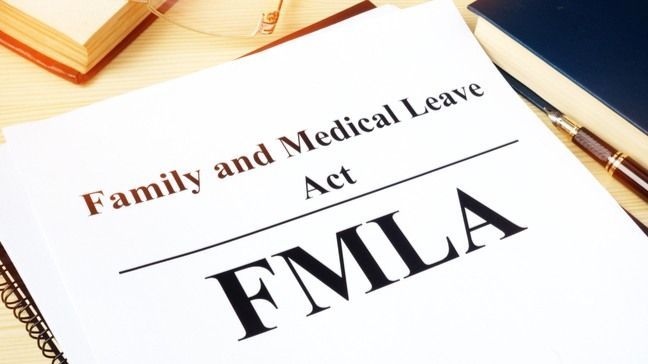It’s an exciting time. You’re preparing to welcome a baby into your family, and you know you’ll need time off. While you might be guaranteed to retain your job as you bond with your little one, thanks to the Family Medical Leave Act (FMLA), paid maternity (or paternity) leave isn’t guaranteed.
In fact, according to the OECD, the United States is the only developed country that doesn’t require paid maternity leave, and among the half of countries in the OECD that doesn’t offer paid paternity leave. But that doesn’t mean you’ll be left high and dry — depending on where you work.
Here’s what you need to know about using paid maternity or paternity leave.
State Law and Individual Employer Policies

First of all, even though there’s no federal requirement to provide paid maternity leave, there are a few states that require certain employers to provide paid family leave — and this might include paternity leave as well. Check with your state law to see what’s required and if you qualify.
You can also check with your company’s paid family leave policies. There are companies in the United States that recognize the importance of providing paid maternity leave.
Mothers, fathers, and children all benefit when paid parental leave is implemented. Women are more likely to remain with the company after the birth of a child when maternity leave is offered. When paternity leave is part of the equation, men are more likely to be engaged in parenting activities.
With parental leave in place, whether childbirth or adoption is a method of introduction, it’s possible for both parents — no matter their gender identity — to bond and participate in parenting activities.
I recommend that you visit your company’s human resources department to find out what type of paid parental leave is available, how long it lasts, and whether you qualify.
Alternatives to Paid Maternity Leave
If your company doesn’t offer paid parental leave, you might need to come up with alternatives that allow you to take time off, while at the same time receiving some compensation for the time you take off.
Some options for creating your own maternity (or paternity) leave include:
Short-Term Disability
If you have a short-term disability policy through your work, you might be able to get between 50% and 100% of your salary for a set period of time.
Normally, you won’t be able to claim benefits for longer than 6 to 12 weeks, but it can be a way to receive at least partial pay after childbirth if your company doesn’t offer paid maternity leave.
Paid Time Off
While using short-term disability only works for the person actually giving birth, either parent can use other forms of paid time off to extend paid parental leave. You might be able to look into paid:
- Personal days
- Vacation time
- Sick leave
Find out what you need to do to claim this time off, and give your employer the required notice to ensure that you can claim those days.
You also need to make sure you qualify for some of the time off. Some employers simply offer flexible paid personal time off, and it doesn’t matter what you use it for. Those that divide it into sick leave and vacation time, though, might not let you use paid sick days unless you were the parent giving birth.
Unpaid Time Off
Planning ahead is important if your company doesn’t formally offer paid maternity or paternity leave. You’ll need to save up your vacation or personal days or make sure you have short-term disability coverage. If you aren’t able to make this work, you can find out about unpaid time off.
The FMLA guarantees at least 12 weeks of unpaid family leave for a new child, so you can at least be reasonably assured that you’ll get your job back as long as you meet the eligibility requirements. But you won’t be paid for the time you take off, and you might be required to expend vacation days and personal days before the FMLA kicks in.
Save up ahead of time if you have to take unpaid time off so that you can survive without your paycheck for as long as possible after you bring your baby home.
Work From Home

Another alternative is to work from home. If your job is one that can be done remotely, find out if you can do at least some telecommuting.
Maybe you can work from home two or three days a week, or leave work early and work in the evening. Setting up a flexible schedule can help you get some time in with your child, earn money, and still remain part of your work environment.
How To Prepare for Maternity (or Paternity) Leave

Putting together a game plan for parental leave is vital. Let your boss know you’re expecting — and the probable due date.
Once you start planning your parental leave, there are a few tips you can use to help you through the process:
Work-Related Items for Your Checklist
Try to keep a flexible start date: Babies rarely come on demand. Even if you make an appointment for a birth, the child might still come early. Discuss a flexible start date with your employer.
Do your best to have things squared away ahead of time: Even if you might be working up to a specific date, try to have your workspace and assignments up-to-date before your official start date, just in case.
Train your temporary replacement: Do your best to train your temporary replacement well before you leave, so that they are ready to step in, even if you end up leaving earlier than expected.
Prepare thorough instructions: Throughout the time leading up to your parental leave, prepare helpful hints and instructions and leave contact information for important clients or others who can help the replacement.
Determine how you want to stay in touch: Even though you’ll be out on parental leave, you might want to receive some updates. Perhaps you want a daily email, or maybe you want to touch base by phone once a week. Figure out what is likely to work for you. While you might not want to do much work, you probably still want to stay in the loop so you can ease back into it.
Family-Related Items for Your Checklist
All of the following tips require advance planning. You probably need to prepare throughout the pregnancy, making incremental decisions.
By breaking these items into manageable chunks, and preparing over the course of months, it should be possible to make the most of the time to do as much as possible to smooth the transition to parental leave — and transition back to work.
Save up money: You do want to save up as much money as you can every month leading up to parental leave. Even if you have paid leave, it can help to save up, just in case there are unexpected expenses, or if you only have partial paid leave.
Coordinate with your partner: Check with your partner’s company for paid parental leave. You might want to coordinate your benefits and see if there’s a way for you both to maximize your options.
Set up guardianship for your kids: Before you give birth, it is highly advisable to set up guardianship.
Get life insurance: If you don’t already have a life insurance policy, take one out before the new baby arrives. It’s always a good idea to buy or update your life insurance when you add a new dependent. Whether you’re looking for term or whole life insurance, Policygenius can help you compare quotes from different providers to find a plan that’s right for your family. You just need to complete one short online application to access several options at multiple price points. Plus, you can get 24/7 support from live agents whenever you need it.
Get a life insurance quote with Policygenius or read our full Policygenius review.
Summary
Paid maternity and paternity leave is unfortunately not commonplace among U.S. companies. The Family Medical Leave Act protects your job when you go on leave, but it doesn’t guarantee you’ll get paid.
You’ll likely have to come up with some alternatives, like taking a paid vacation or unpaid leave, to make up for the lack of paid medical leave.